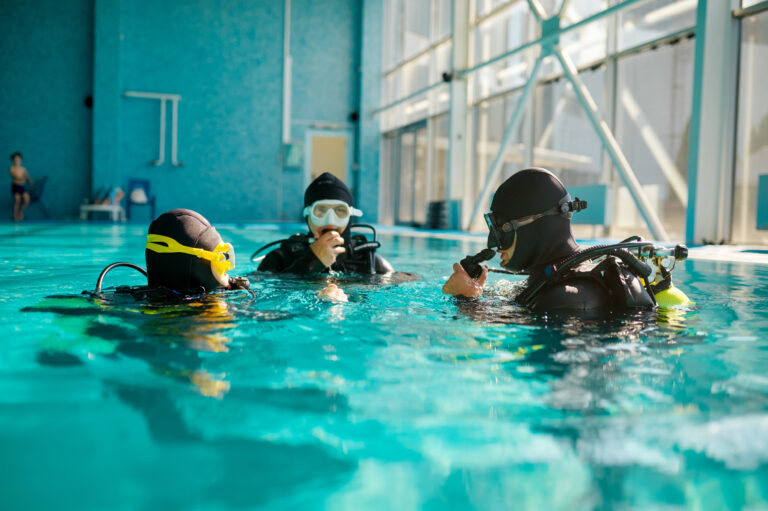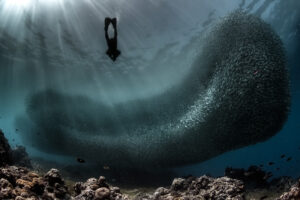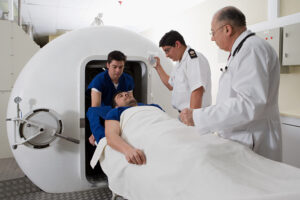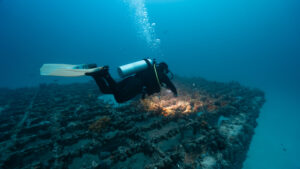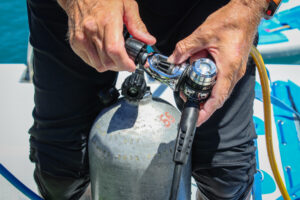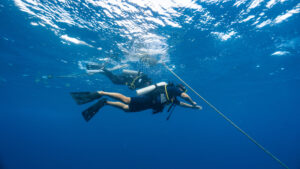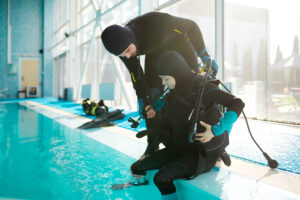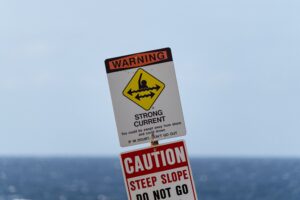What is a Dive Table?
A dive table is a crucial tool in the practice of scuba diving, used to ensure divers can ascend safely without suffering from decompression sickness. These tables provide guidelines for how long a diver can stay underwater at various depths and the necessary surface intervals to avoid decompression sickness, also known as “the bends.” Dive tables are essential for maintaining diver safety, as they help manage the body’s intake and release of inert gases, such as nitrogen, which dissolve into the body tissues under pressure. By following dive table guidelines, divers can plan their dives to stay within safe limits, reducing the risk of injury from decompression.
Historical Development
Before the development of dive tables, divers relied on rudimentary methods and empirical experience to estimate safe dive times. These early approaches were often based on trial and error, leading to many cases of decompression sickness as the science behind decompression was not well understood. The need for a more systematic approach became apparent as diving became more prevalent, particularly during military operations and salvage work.
The first significant breakthrough in decompression theory came in the early 20th century with the work of John Scott Haldane, a Scottish physiologist. Haldane developed the first dive tables for the British Royal Navy in 1908, using principles of gas absorption and elimination. His research demonstrated that the body could safely tolerate certain levels of dissolved gases if given enough time to off-gas during controlled ascents. Haldane’s tables marked the beginning of a more scientific approach to dive safety.
Over the years, dive tables have evolved significantly. In the mid-20th century, the U.S. Navy developed its own set of dive tables, which became widely adopted by civilian divers as well. Advances in decompression theory, driven by research and experimentation, have led to the creation of more sophisticated and conservative tables. Today, various dive organizations, including PADI (Professional Association of Diving Instructors) and BSAC (British Sub-Aqua Club), have their own dive tables, each incorporating the latest scientific understanding and technology to ensure diver safety.
Scientific Principles Behind Dive Tables
Decompression sickness occurs when dissolved gases, primarily nitrogen, form bubbles in the body’s tissues and bloodstream as a diver ascends and the pressure decreases. The risk of decompression sickness is influenced by factors such as dive depth, duration, and the rate of ascent. Dive tables are designed to mitigate this risk by providing guidelines that manage the body’s uptake and release of these gases.
Underwater, the increased pressure causes nitrogen to dissolve into the body’s tissues at a higher rate. The deeper and longer a diver remains underwater, the more nitrogen is absorbed. When a diver ascends too quickly, the rapid decrease in pressure can cause the nitrogen to come out of solution and form bubbles. These bubbles can lead to joint pain, dizziness, paralysis, or even death if not managed properly.
Dive tables are based on mathematical models that predict how nitrogen is absorbed and released by the body. These models take into account factors such as the half-times of different tissues, which represent the time it takes for a tissue to absorb or release half of its nitrogen content. By calculating the safe limits for dive duration and depth, as well as required surface intervals, dive tables help divers plan their ascents to avoid the formation of harmful bubbles.
Different tissues in the body absorb and release nitrogen at different rates, which is why dive tables include multiple compartments or “tissues” in their calculations. These compartments represent theoretical tissues with varying half-times, allowing for a more accurate prediction of nitrogen uptake and release. This multi-compartment model forms the basis of most modern dive tables, ensuring they provide a comprehensive guide to safe diving practices.
Different Types of Dive Tables
Several types of dive tables are used around the world, each with its own methodologies and conservatism levels. The U.S. Navy dive tables are among the most well-known and have been used as a standard for many years. These tables are relatively conservative, designed to ensure the safety of military divers under a variety of conditions. They provide guidelines for both no-decompression dives and decompression dives, where divers exceed the no-decompression limits and require mandatory stops during their ascent.
PADI’s dive tables, known as the Recreational Dive Planner (RDP), are tailored for recreational divers. These tables are designed to be user-friendly, with a focus on simplicity and ease of use. The RDP allows divers to plan single and repetitive dives, providing clear guidelines for maximum bottom times and required surface intervals. PADI also offers a version of the RDP that includes the effects of using enriched air nitrox, a breathing gas with a higher oxygen content than regular air.
BSAC’s dive tables are another widely used set, particularly in the United Kingdom. These tables are known for their detailed approach, offering guidelines for a variety of dive profiles and conditions. BSAC tables include specific recommendations for cold water diving and diving at altitude, where the reduced atmospheric pressure can affect decompression calculations.
Each set of dive tables has its strengths and is designed to meet the needs of its intended user base. While there are differences in the specifics of their guidelines, all dive tables share the common goal of promoting safe diving practices by managing decompression risks.
How to Use Dive Tables
Using dive tables involves several steps, each crucial for ensuring a safe dive. The first step is to determine the depth and duration of the planned dive. Dive tables are typically organized by depth ranges, with each depth corresponding to a maximum allowable bottom time. Divers must locate the appropriate depth on the table and then find the corresponding time limit for a no-decompression dive.
After completing the dive, divers need to calculate their surface interval—the time spent at the surface before the next dive. Dive tables include guidelines for surface intervals, which allow the body to off-gas some of the absorbed nitrogen. The surface interval is critical for planning repetitive dives, as it influences the maximum allowable bottom time for subsequent dives.
When planning repetitive dives, divers must also consider their residual nitrogen levels from previous dives. Dive tables often include a series of pressure groups or codes that indicate the amount of residual nitrogen in the body. By referencing these codes, divers can adjust their dive plans to ensure they remain within safe limits. For example, a diver in a higher pressure group after a first dive will have a reduced maximum bottom time for a second dive.
It’s essential to follow the dive table guidelines precisely and to avoid pushing the limits. Common mistakes, such as rounding up dive times or depths, can lead to an increased risk of decompression sickness. Divers should also factor in other variables, such as water temperature and physical exertion, which can affect nitrogen absorption and elimination rates.
Dive tables require a clear understanding and careful application to be effective. Divers must be familiar with the terms and calculations involved, and they should practice using the tables regularly to build confidence and accuracy in their dive planning.
Role of Dive Tables in Dive Planning and Safety
Dive tables play a pivotal role in dive planning, providing a structured approach to managing decompression risks. By offering clear guidelines for maximum bottom times and surface intervals, dive tables help divers plan their dives to stay within safe limits. This planning process is essential for avoiding decompression sickness and ensuring a safe and enjoyable diving experience.
In addition to dive tables, many divers use dive computers and personal dive planning apps to enhance their safety. Dive computers provide real-time data on depth, bottom time, and decompression status, offering a dynamic and interactive approach to dive management. These devices can complement dive tables by providing additional layers of information and safety, especially in complex dive profiles.
However, even with advanced technology, the fundamental principles of dive tables remain critical. Divers must understand how to interpret and apply the guidelines provided by dive tables, as these principles form the foundation of safe diving practices. Dive tables also serve as a backup in case of dive computer failure, ensuring that divers can still plan and execute their dives safely.
Safety guidelines related to dive tables emphasize the importance of conservative diving practices. Divers are encouraged to plan their dives well within the limits set by dive tables, allowing for safety margins in case of unexpected conditions. It’s also important to monitor personal health and fitness, as factors such as fatigue, dehydration, and illness can affect decompression risk.
Dive tables are an indispensable tool for divers, providing a reliable method for managing decompression risks. By integrating dive table data with other planning tools and following safety guidelines, divers can minimize their risk of decompression sickness and enjoy their underwater experiences with confidence.
Limitations of Dive Tables
Despite their effectiveness, dive tables have certain limitations and potential inaccuracies. One major limitation is the variability in individual susceptibility to decompression sickness. Factors such as age, fitness level, hydration status, and previous dive history can influence how a diver’s body absorbs and releases nitrogen. As a result, dive tables may not provide a one-size-fits-all solution for every diver.
Dive tables are also designed for typical dive profiles and conditions, and they may become less effective in certain scenarios. For example, diving at altitude requires adjustments to the dive table calculations due to the lower atmospheric pressure. Similarly, cold water diving can increase nitrogen absorption rates, necessitating more conservative dive planning. Divers must be aware of these conditions and modify their dive plans accordingly.
Another limitation is the static nature of dive tables. While they provide valuable guidelines, they cannot account for dynamic factors during a dive, such as changes in depth or exertion levels. Dive computers offer a more responsive approach to dive management, adjusting calculations in real-time based on actual dive conditions. However, divers should still have a solid understanding of dive tables as a fundamental safety measure.
Education and continuous learning are essential to compensate for the limitations of dive tables. Divers should stay informed about the latest research and developments in decompression theory and practice. Training courses and refresher programs can help divers maintain their skills and knowledge, ensuring they can use dive tables effectively and adapt to various diving conditions.
Key Takeaways
Dive tables are a vital tool for ensuring diver safety by managing decompression risks. They provide guidelines for safe dive durations, depths, and surface intervals, helping divers avoid decompression sickness. Understanding and correctly using dive tables is essential for all divers, despite advancements in dive technology such as dive computers. By integrating dive tables with other planning tools and following conservative diving practices, divers can enjoy safe and rewarding underwater experiences.

